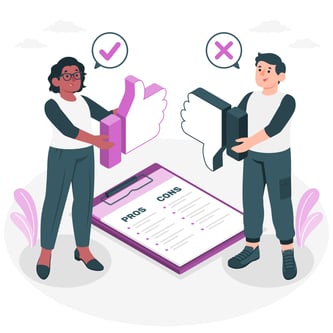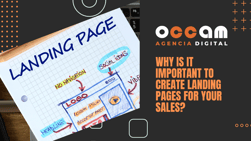Index Content
Tailor each sales presentation to the customer's particular context to boost their purchase
The last phase before closing an offer, known as the advice stage, is always accompanied by a sales presentation. And it is not enough to create a standard one for all customers: in inbound sales, it is essential that it is adapted to the context and needs of each prospect. In this way, the role you should play is that of an advisor, and not that of the traditional salesperson who is only looking to close one more sale.
In this presentation, you will explain to the user that your offer is the best for their situation with personalised information that they cannot find on the Internet. In other words, do not waste time talking about who you are, what your company does, who you have worked with, etc. It is most likely that the potential client already knows all this information at this stage. Instead, focus on creating a sales presentation that works as an advisor by following the four steps detailed below from OCCAM.
-
review your previous conversations with the prospect to start the sales presentation
Before you get to the coaching stage, you will have had other calls with your prospect. Thanks to these and the CGP, TCI, BA method, you now have a deep understanding of their situation and need to demonstrate this to them. To do this, summarise the key points from the other conversations in the presentation and ask if their goals and challenges remain the same.
This first phase is essential to build trust between your company and the prospective client. Show that you are both on the same page and that you are working along the same lines based on the above, so that you can convince them that their current plan will not lead them to achieve their goals and that your help is not only essential, but also the best option on the market.
A tip: use the first person plural when talking about your client's goals, for example, say something like: "With this strategy, we can overcome the challenges in a short time".
-
make suggestions on how your prospect can meet his or her goals
This is where the service or product the user will buy comes into play. Explain how they can achieve their goals, the different ways to achieve them, and the best option for the customer's specific context. To do this, you need to include the following elements in your sales presentation:
- opinions of people who have been in the same situation as your buyer. This way, they will be able to compare and learn about real success stories that started from a similar situation to theirs. Therefore, it is clear that it is no use presenting the same opinions to all your potential customers. As we have seen, in inbound sales you must adapt each presentation.
- pros and cons of each option. It is important that the customer knows all the different ways to introduce the change in their current plan. In this sense, your job is to present the advantages and disadvantages of each option according to the prospect's needs. In this way, you will be helping them to make the best decision for themselves.
- the justification of which option is best for your prospect's needs. If they choose the right one, tell them why you agree with them. If not, go through the pros and cons again and explain which one is most appropriate for their particular case by highlighting the benefits.
Throughout this process, it is essential that you adopt a flexible attitude. In this way, you will keep the user's attention at all times depending on how interested you see them in each topic you address. After all, conversations are unpredictable no matter how much you plan them, and it is essential that you know how to adapt to all possible situations. You will also have to be able to answer the questions that arise, so you should prepare the most frequent doubts about your product or service.

-
focus on the essential questions to close the sale
When the customer is sure that your option is the best way to improve their situation, the time has come to start making the decision. To do this, include the following three aspects in your presentation:
- deadlines: To define a timetable for action, check when your prospect needs to achieve their objectives and overcome each challenge. Here you need to calculate when the client should sign the opposite in order not to delay the newly agreed deadlines.
- the budget: Confirm one last time that the client agrees with the agreed budget.
- making the decision: Who will sign the contract, do all parties involved in the decision agree? If all these issues are already clear, you can dedicate this part to discuss the next steps of the process.
-
help the user to make a final decision
Once you have finished your sales presentation, the last step is to confirm that the customer is absolutely sure that the solution you are offering is the best. This does not always happen with total conviction, so you should spend some time motivating the prospect. The best tool for this is the 1-10 closing technique (similar to the Likert scale).
Ask your client what score he/she would give to the proposal as a whole and raise new questions based on his/her answer. Ask him/her why he/she gave that score, why he/she did not choose a 10, what worries him/her the most, etc. Try to solve his/her doubts and concerns so that the final balance of pros and cons is as positive as possible. Finally, ask him/her if he/she would change his/her initial score. Ideally, the score should have increased and he/she should not answer less than a 9.
In case he/she gives a 6 in the initial question, don't go any further. Tell him/her that it is necessary to resume the conversation from the exploration stage in order to solve all the necessary points.
and that's it! With this presentation, you will have closed a new sale or be on the verge of doing so. Remember that the two fundamental keys in this process are personalisation and advice. With that clear, get down to work!





